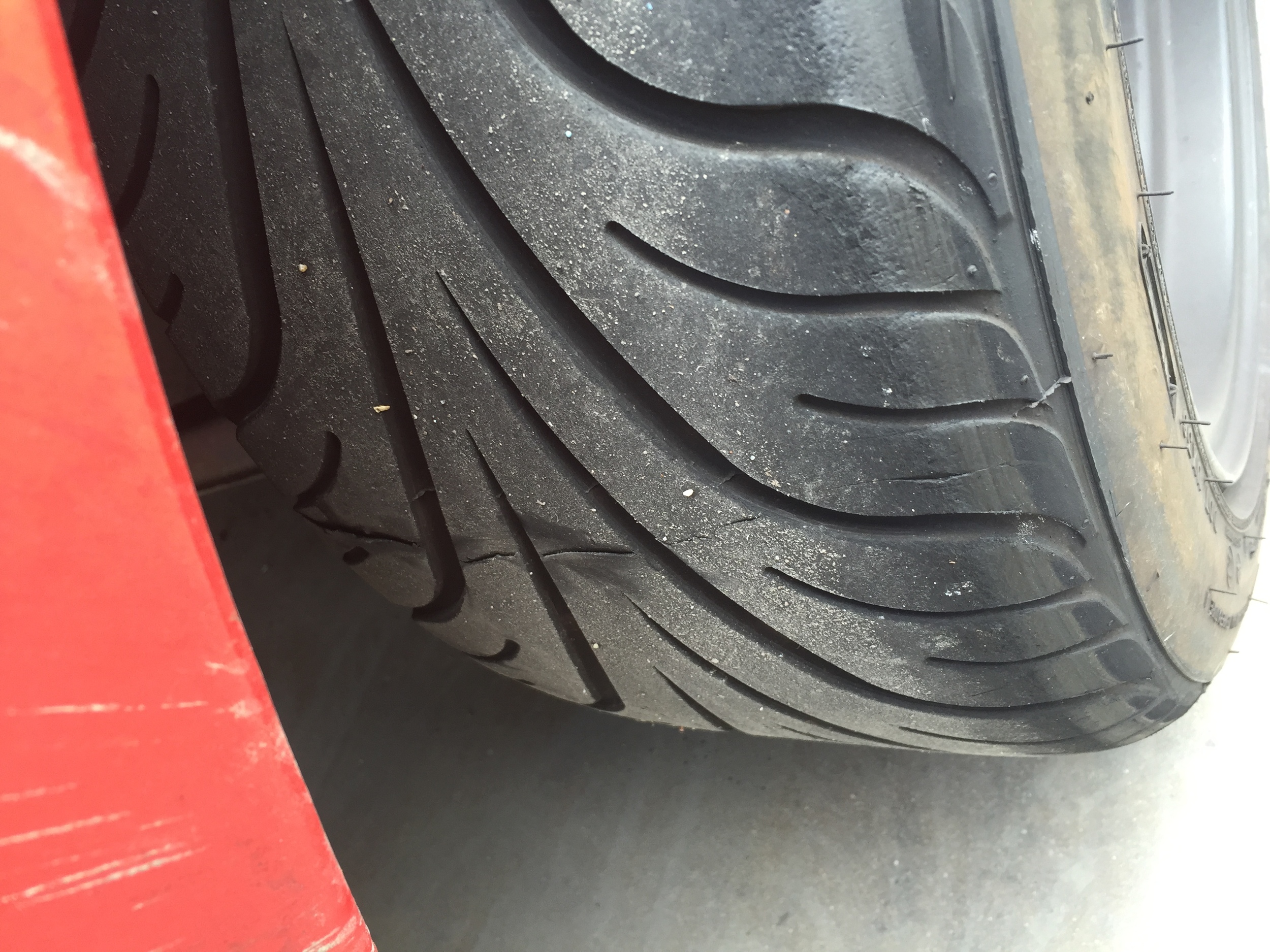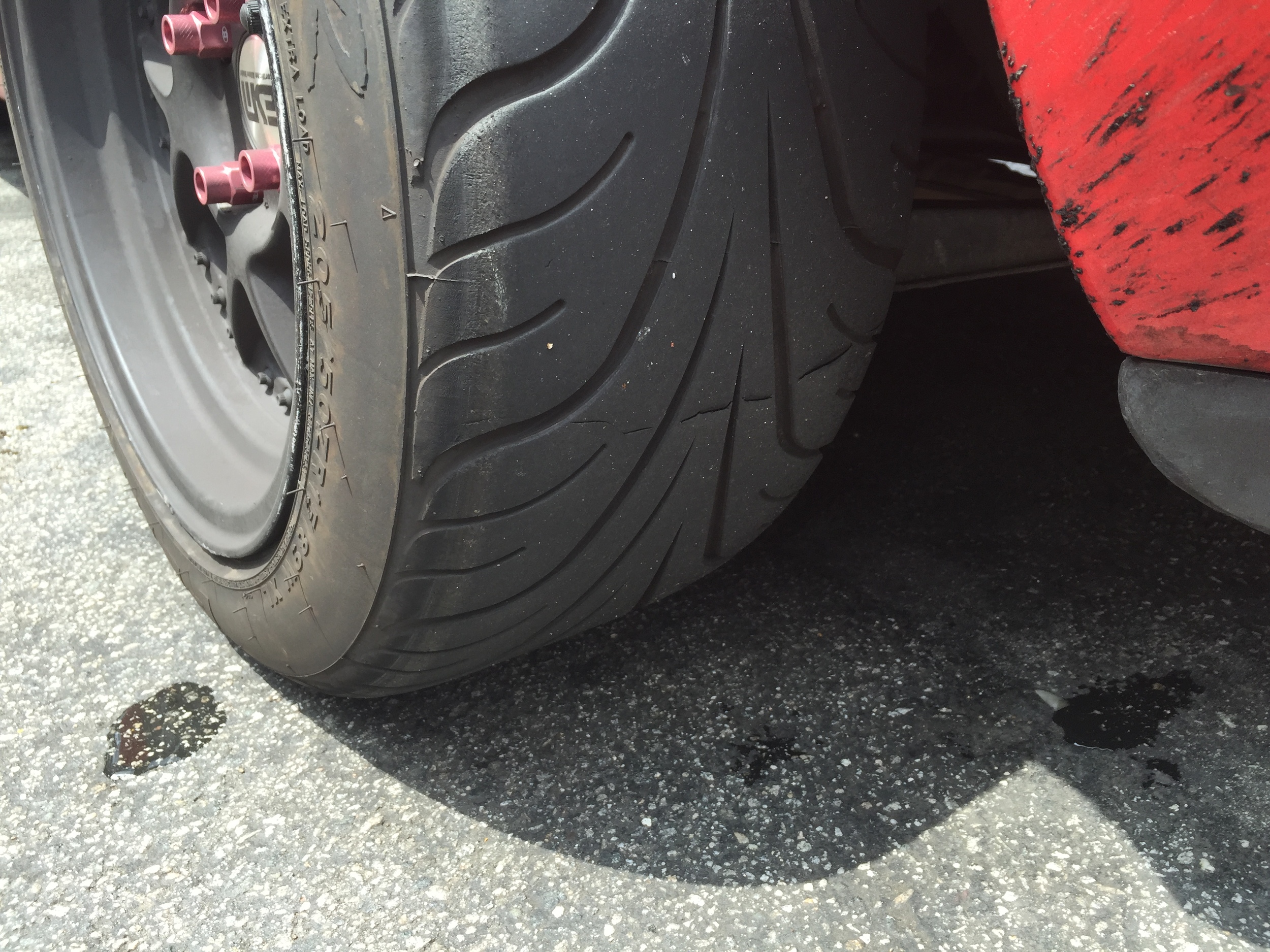With the new RS-RR out, I figured it would make sense to review the last gen 140 AA A UTQG tire in the Federal line up. Now whether or not they will discontinue the RS-R is not yet certain, although it woudn't make much sense to sell two different 140 AA A tires, when one is supposed to be superior to the other. One thing for sure, however, is that many people have used the RS-R tire, with the primary incentive behind the purchase being the value. Intense hype was built around these upon their initial release, with users claiming these tires to be as good as RS3s, but for a fraction of the price. Being the skeptic I am, I decided to try them out for myself.
I've used RS3's, and I've gotta say, their grip is unparalleled to practically any street tire out there for track use. I've also used AD08Rs, and their braking performance leaves the rest of the competition in the dust. So exactly where does the RS-R stand in this mini-chart? Well, let's just say it has yet to make the list. Look, anyone who came out and said that RS-Rs compare to the RS3s must have been high on some really good crack, because these tires aren't even on the same playing field. I've had BFG g-Force sports grip only slightly worse than the RS-Rs, which would be only expected. Yet, why should I even bother comparing the RS-R to the BFG sport? I mean sure, they have slightly more grip, and they brake quite a bit better, but that's the bare minimum I expected from a tire that was as hyped as Stannis Baratheon during season five of Game of Thrones. Sure, the value isn't too bad, costing around $280 per set of 205-50-15s, when compared to almost double that for the RS3s, but doesn't the price simply reinforce the good ol' idiom "you get what you pay for"? And exactly what is it that you get for these $280?
Well, for starters, the tires don't grip too badly. As a matter of fact, they do grip pretty well at first. As the race event drags along, however, the confidence level in the performance of these tires plummets. I can't count the amount of times I've had grip, more grip, plenty more of it, and then suddenly found myself wiping out half a dozen cones or spinning out into the dirt on the race track just because they decided to let go. And yes, they do just decide to let go, get greasy, whatever you want to call it. They do maintain grip better on the race track rather than on an autocross course, but you'll eventually spin. It doesn't help that the more the tire is heat cycled, the less likely it is to maintain grip throughout the run. Not only does this mean less confidence in the overall performance of the car, but also results in slower lap times, because you end up having to slow yourself down to prevent the inevitable injury or death.
Speaking of slow, they do slow down the car pretty well. As a matter of fact, these tires are good enough to put most of the strain of braking on the pad and the rotor, as they grip well enough to prevent locking up. Do keep in mind that upgrading to decent pads would only make sense, unless you like your pads falling out of your calipers and your piston dropping out, pissing out brake fluid and leaving you relying on your e-brake for the rest of your trip (don't ask me how I know). Yet, their braking capability is about the only consistent thing about these tires, and my personal favorite aspect of them. My least favorite aspect, however, is not their lack of consistency. Rather, it's the occasional cracks that cover the surface of the tires, and by cracks I mean the type of cracks that will scare a casual driver away from these tires. And I was not the only one who had this issue, look it up. I don't even have to go and tell you one of those stories about a friend of a friend, it's all in the internet. And it's not about whether or not it's actually harmful, but admit it- it just doesn't inspire much confidence to see your track-day tires split. They do last a while, though, especially considering I had crap alignment for a good half of the time I had these tires. I put on around 4 auto cross events and a single track day, and they still had around half of their tread.
So are these tires worth the money? Well, they most certainly are not a bargain of this century, far from it actually. Unless this is your first set of sports tires, I wouldn't go as far as to say that they are worth the money. I'm not going to assume anything about the RS-RR, but the previous generation always sets a precedent, and let's just say that if I were to decide on whether or not to purchase the RS-RR solely based on the performance of the older sibling, I would avoid it if at all possible. Would I buy these tires again? Sure, as a cheap, absolute-emergency spare set; you know, the set you use after your three other sets of tires wore down or exploded, or the set you buy because you have one more event coming up that you need to score the third place to win overall, and every other manufacturer is sold out at the time. The RS-R then, is much like a closer batter that's never batted before in a baseball game, and is only allowed on the plate because there is only one inning left, and the winning team has a 6 point lead. You get the point, there are better options that are simply worth the extra few hundred dollars, and if your budget allows, you should just spend that extra few hundred on tires that don't split, and don't surprise you with a sudden loss of grip, sending you straight into the flag station.



